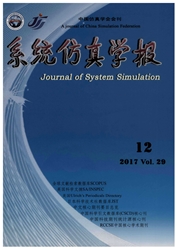

 中文摘要:
中文摘要:
在智能交通系统中,车辆上常常安装无线ad hoc节点,车辆间通过Ad hoc方式进行点对点通信,针对这种车载无线自组网络在实际道路上的网络拓扑特点,抽象出合理的网络模型,利用渗流理论讨论该网络的连通性问题。首先证明了1维动态无线自组网络的“无渗流”特点,并通过仿真实验探讨实际交通网络中车载无线ad hoc节点的合理传输半径,提出通过合理部署静态节点的方法提高1维动态网络的连通性。针对2维车载无线自组网络的交通特性,提出适合车辆交通网的无线节点连通性策略——基于定点覆盖的策略,从理论上给出了2维网络被定点覆盖的条件,之后通过仿真实验分析2维车载无线自组网在真实道路系统上的连通特点,并针对定点——五角场中心进行定点覆盖实验。
 英文摘要:
英文摘要:
In ITS (Intelligent Transportation Systems), each vehicle is often equipped with an ad hoc node which is used to transmit information on point-to-point communications between vehicles. All these ad hoc nodes compose of a vehicular wireless ad hoc network. From the vehicular wireless ad hoc network for the real road transportation system, reasonable network models were abstracted and the connectivity of the network was discussed by percolation theory. In one-dimension (l-D) network, the characteristic of "non-percolation " in 1-D mobile wireless networks was proved. Then the method of rationally locating static nodes was proposed to improve the connectivity of 1-13 network. Through simulation experiments the reasonable transmission radius of wireless ad hoc nodes in real traffic network was obtained In two-dimension (2-D) networks, a novel connectivity strategy was introduced, named the point-based coverage strategy. This strategy suits the connectivity of real transportation network. The condition of an area being covered by a certain point in 2-D network was analyzed by percolation theory. Then the simulation shows the connectivity of real traffic network and the characteristic of being covered by the center point of Wujiaochang.
 同期刊论文项目
同期刊论文项目
 同项目期刊论文
同项目期刊论文
 期刊信息
期刊信息
